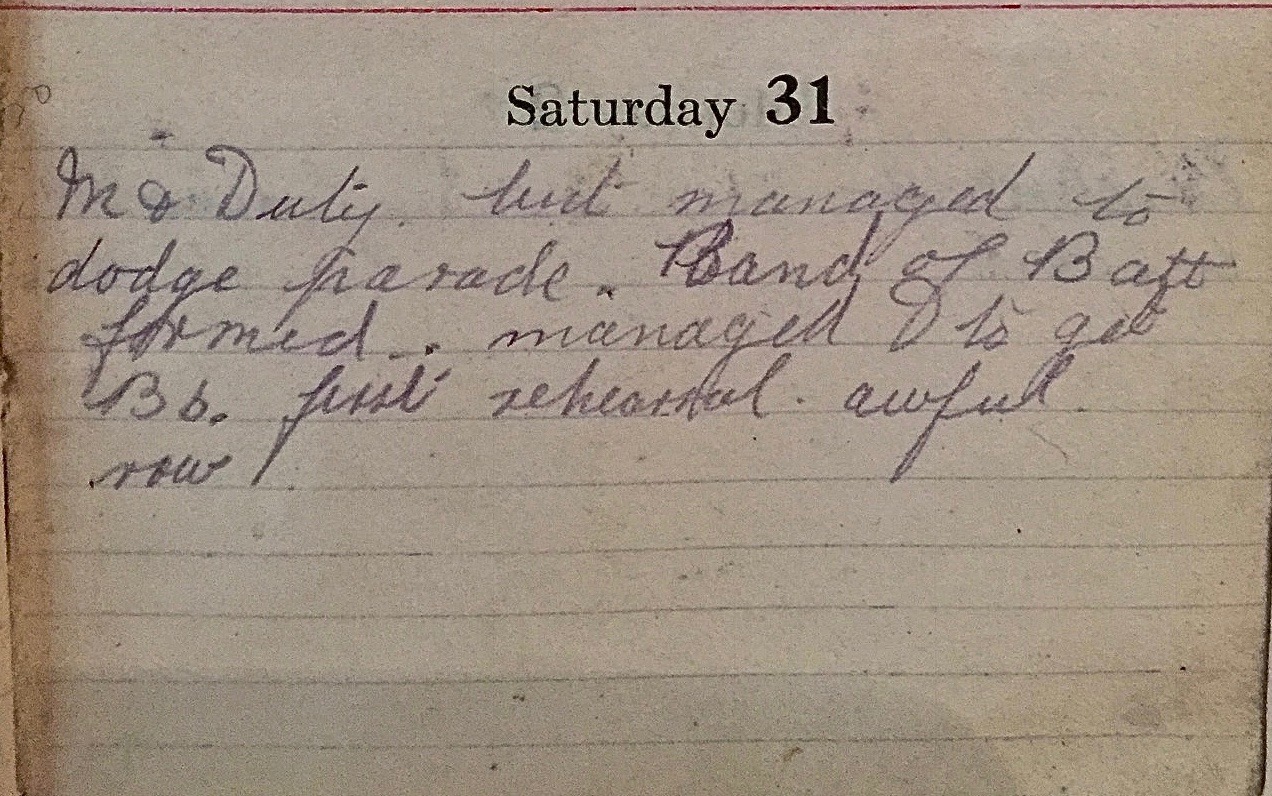Saturday August 31st, 1918
Back on duty but managed to dodge parade. Band of Battalion formed, managed to get Bb. First rehearsal, awful row.
Joining the Battalion Band
Frank is feeling better and is delighted to have secured a place in the newly formed band of the 9th Battalion. Frank has been a tuba player with Shaw’s Salvation Army Band since before the war and is, by all accounts, a good musician.
Brass bands have both Bb (B flat) and Eb (E flat) sections. Frank is delighted to get Bb – this is probably a personal preference. Bb is associated more with amateur music and, unless in an orchestra, is rarely played by professional musicians.
Salvation Army’s Bands
The Salvation Army has always used music in its worship. Established in 1878 along idealistic militaristic (army) lines, its adoption of a brass band as its musical heart makes sense.
‘This linking of the spiritual and musical message saw the formation of brass bands and choirs (songster brigades). These musical groups were exclusively for those who were Salvation Army Soldiers (members who had signed a covenant to The Salvation Army)…. The sole aim of this fledgling movement was the Salvation of souls. The musical sections established to support that movement were conceived as a means of helping to achieve that objective. As a result their music was used within their own services and also in the open-air to convey the Christian message.’¹
Band Music in WWI

Music was also important to the leisure time of the Army in WWI and bands were used in both concerts and at recreational gatherings. It could also be stirring in the aftermath of battle, as noted by Burgon Bickersteth during the advances of October 1918.
‘Next day, the Canadian infantry had got a long way ahead of us. There was even a band which came marching through the village, leading a battalion. There is something inexpressibly moving in a military band swinging proudly through a village, which till shortly before was in enemy hands. An advance is a great thing.’ ²
The photograph shows troops of the 12th Battalion, London Regiment re-entering the village of Villers-Cotterets on returning from the lines, headed by their band, on April 6th, 1918.
Battalion Strength
At the end of July, the strength of the 13th Battalion was 26 Officers and 803 other ranks (OR). Since then, the 13th has taken in the remnants of the 17th and then itself been absorbed into the 9th Battalion. New officers and other ranks have been joining at pace. Today, Lt-Col Morrell records the effective strength of the Battalion at 46 Officers and 889 OR. The Battalion is clearly strengthening for battle.
9th Battalion / Manchester Regiment War Diary – 31st August 1918 – Haudricourt
Battalion route march kit and foot inspection. Scheme for platoon and section commanders. The band instruments of the late 17th (S) Bn having arrived, a brass band is being formed in the Battalion.
The health of the Battalion is good, a small proportion of the men have had malaria but in the Battalion itself there has been very little.
The effective strength of the Battalion is 46 Officers and 889 OR.
JFB Morrell, Lt Col, Cmdg 9th Bn, The Manchester Regt. 1-9-18
References & Further Reading
¹ ‘Music practice within The Salvation Army: its History, Significance and Relevance in the 21st Century‘ by Andrew James Blyth
² ‘The Bickersteth Diaries 1914-1918’, Edited by John Bickersteth, 1995, Leo Cooper, page 285
^ Q 47602, copyright Imperial War Museums


